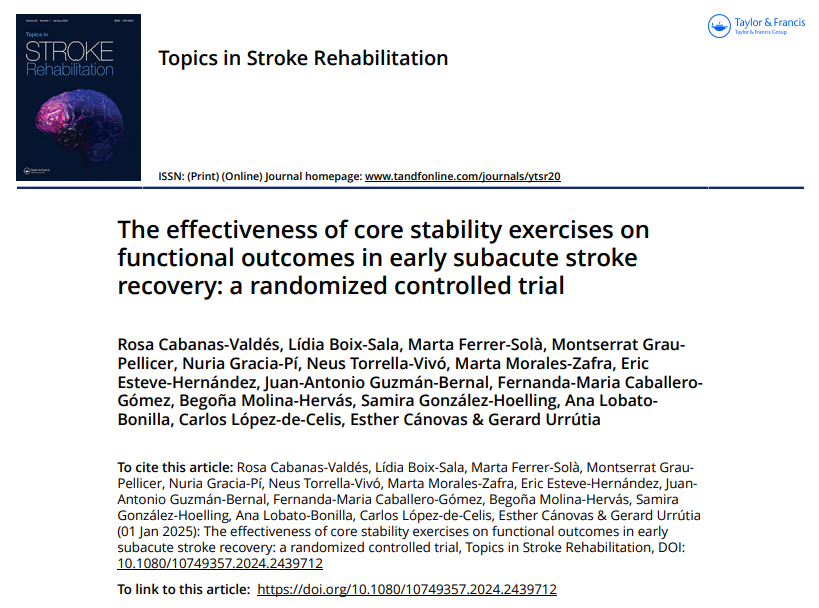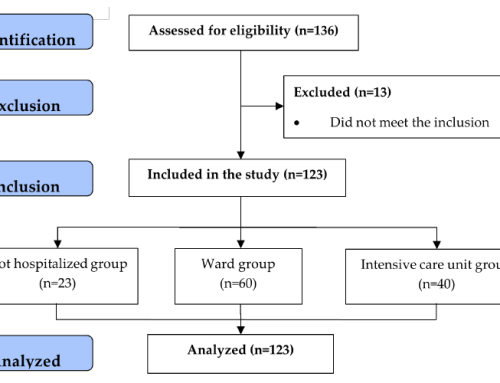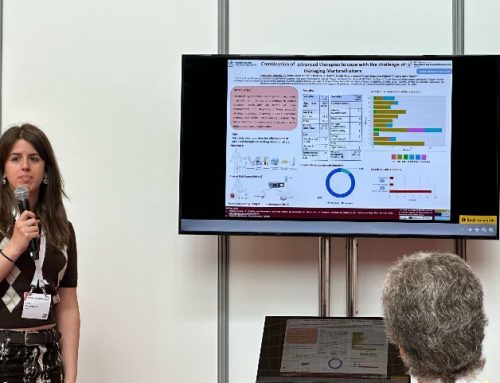
Article: The effectiveness of core stability exercises on functional outcomes in early subacute stroke recovery: a randomized controlled trial
Coauthors: Rosa Cabanas-Valdés, Lídia Boix-Sala, Marta Ferrer-Solà, Montserrat Grau-Pellicer, Nuria Gracia-Pí, Neus Torrella-Vivó, Marta Morales-Zafra, Eric Esteve-Hernández, Juan-Antonio Guzmán-Bernal, Fernanda-Maria Caballero-Gómez, Begoña Molina-Hervás, Samira González-Hoelling, Ana Lobato-Bonilla, Carlos López-de-Celis, Esther Cánovas, Gerard Urrutia
Abstract
Background: The core is important in providing local strength and balance and is central to almost all kinetic chains of daily activities.
Objective: This study aimed to assess the effectiveness of additional Core Stability Exercises (CSE) to conventional physiotherapy (CP) versus CP alone to improve dynamic sitting balance, coordination, trunk function, and stepping (gait) as a primary outcome and functional sitting balance, postural control, standing balance and fall risk, lower limb spasticity, activities of daily living, degree of disability, and quality of life for early subacute stroke recovery.
Methods: A multicentre parallel, randomized, controlled, assessor-blinded trial was conducted. Eighty-seven early stroke survivors initiated (≤30 days) were divided into two groups. Experimental group (EG) performed CSE in addition to CP and the control group (CG) performed CP alone for 5-day/week for 5-week. Outcomes were assessed at the beginning and end of the intervention (5-week) and follow-up (12-week). Quality of life was assessed at 5-week and 12- week. Variables were analyzed using a repeated-measures analysis of variance (ANOVA), with Bonferroni’s post-hoc test. All statistical tests were performed for 0.05 significance level and 95% confidence interval.
Results: Eighty-three individuals were analyzed 40 in the EG and 43 in the CG. Differences between groups were shown favoring EG regarding dynamic sitting balance, trunk coordination/function (Spanish-Trunk Impairment Scale), lower limb spasticity (modified-Ashworth Scale) and balance (Spanish-Postural Assessment Scale). No differences were observed for the other outcomes.
Conclusions: CSE in addition to CP improves dynamic sitting balance, trunk coordination/function, lower-limb spasticity, and balance in early recovery post-stroke.
Keywords: Stroke; activities of daily living; core stability; exercise; gait; postural control, sitting balance; trunk function.












Leave a Reply